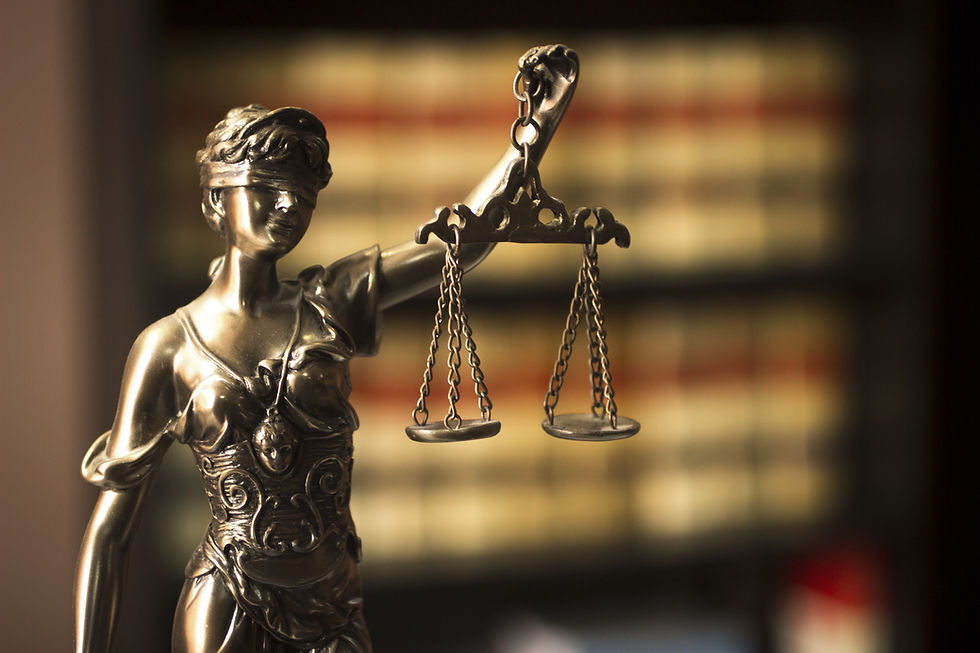Copyright Law—What Artists Should Know
- Teresita "Angela" Terga
- Oct 7, 2021
- 8 min read
Updated: Jan 26, 2022
But before you read any of the above books, take a look at this quick guide.

Before publishing, getting hired, posting on social, or selling intellectual property, creators who know the basic practice of copyright law and how to use its tools are more confident about how the industry works.
In this eBook, created while coursing a master’s program at Arkansas State, my intent was to exhibit all the parts, create a summary, a defense strategy, and develop foundational knowledge of copyright law agreements, rights, fair use, and infringement. To apply this understanding to the action of helping myself know what to do if I want to strike, mend, or break a deal with a private entity, business, corporation, publisher, or agent as a buyer and seller of intellectual property through my own corporation.
Novice authors, inventors, designers—artists of all sorts, who are likely to get stiffed or burnt for lack of foundational knowledge are at the mercy of legal fees. Most artists already have a hard enough time producing their art while at the same time in the race for making a living wage. Receiving adequate compensation for the work they have been hired to do or the product created is a matter of having the tools at hand.
In any case, you may copyright the material under you name, even if it was intended as a work for hire. Whether the work was independently finished and minimally directed, or not, if you were stiffed, it’s yours.
What should agreements include foreseeing such cases of non-payment or non-compliance?
What about royalties for writers? What other questions are often heard?
Whether your intellectual property is making profits yet or not you need to have a few things in place before you discuss your plans and share your ideas and intangibles as well as tangibles with competing entities. A competitor is anyone who benefits from the same type of product that you offer, so your partners are also potential competitors. Keep that in mind. People cannot copyright an idea, but ideas can become tangibles.
Part 1
When did Copyright Law come into existence?
The licensing Act of 1662 of England set up the Stationer’s Company, a group of publishers, (like the big five of today), who had the absolute power to censor and publish books.
In 1710, the British Parliament passed the Statute of Anne, which set up author ownership and copyright protection for 14 years renewable before the death of the author. Therefore, creating the “public domain” status. But printers still had the upper hand.
These laws applied to the colonies. However, in 1887, the US Constitution in Article 1, Section 8, clause 8 provided for “securing for limited times to authors and investors, the exclusive rights to their respective writings and discoveries.” This measure was intended to promote the sciences and the arts.
Today, there is still a lot of censoring, but the royal mandate is the almighty dollar. If you can persuade the “publisher” that your product has a good chance of making a profit, you’ll get a deal. You may never get a Nobel Prize but being published by one of the Big 5 will make you well-known and perhaps a modicum profit. Remember, the more contests your work wins the better.
From the First Copyright Act of 1790 to the 1976 Copyright Revision that is in effect now, there have been many amendments.
Modeled after the Statute of Anne, the first US Congress formulated the Copyright Act of 1790 thereby granting authors the right to print, re-print or publish for 14 years. The copyrights were renewable for the same amount of time.
Several revisions have been made throughout the years, the last of which is the 1976 US Copyright Revision that is still in effect today.
The Sonny Bono Copyright Term Extension Act signed by President Clinton on October 27, 1998, extended the copyright term to be “the life of the author plus seventy years.” Works copyrighted on or after 1923 would not enter the public domain until 2019 or later.
With the advent of social media, new technologies have made it necessary to create a shift in paradigm. We will discuss that in this three-part series of “Copyright Law - What Artists Need to Know,” series.
What does the Copyright Law of the US include?
The Copyright Law of the US is Title 17 of the US Code. It contains the Copyright Act of 1976 and all the amendments made to the copyright law until 2020, such as the Semiconductor Chip Protection Act of 1984 and the Vessel Hull Design Protection Act.
It lists the types of work covered, the exclusive rights, copyright term, copyright notice and registration, infringement, fair use, and remedies.
Where can artists learn and register for copyright?
When looking for answers, the Copyright Office should be your first stop. It has the answers to all your copyright questions but not the explanations to how they apply to your specific case. Unless you understand the rights and responsibilities of all the parts of every agreement and bit by bit, you are unable to answer questions of infringement and ownership that may be due to you.
Understanding copyright law in practice.
Kind of complicated…right? So, let’s get familiar with the law and understand its practice so that you will make the right decisions in your life when it comes to protecting your efforts and creations, as well as when hiring someone to take your dream and realize it to your satisfaction.
For starters, the Copyright Society of the USA lists and explains Copyright Terms and Definitions that will help you figure out what you want and who you are in the copyright process.

Public Domain Status - what is it and how can you access PD works?
As of 2019, it is free to use any work published in the U.S. before 1924. Copyright has expired for these works. Many works published before 1964 became public domain when their copyright was not renewed. To find out if a work is public domain go to the US Copyright Office and search for works published between 1923 and 1964. Works published during these years may have failed to renew.
Copyright protection always expires at the end of the calendar year, the last day of copyright protection for any work is December 31.
Where can you find public domain property?
Smithsonian Open Access has a vast collection of public domain art of historical value.
How do I find public domain images? You might ask – Here’s an article for those who are always on trying to Find Free and Public Domain Images With Google.
If you’re looking for books in the public domain look no further than Project Gutenberg a vast library of eBooks including Audiobooks absolutely free of copyright.

Read The Real Deal-Title 17 – Copyright Law
Copyright reform is in conversation and has been for several years.
I have been on both sides of the spectrum and know how easy it can go wrong for either one of the sides and ultimately both. I have also realized how alone artists are when it comes to support and someone watching their backs.
At the same time, artists and designers who do not deliver the agreed upon product or services to the level of satisfaction assumed and specificized, make us look for a safe third place where we can get the same services with some level of confidence. We need to have clarity, but even then, there are pitfalls.

Works for Hire - Be your own advocate
Never, ever, work without an agreement; and always include a copyright statement in all that you publish, in any format.
“But that’s almost impossible nowadays!” some say. Most of all, be careful with your step-by-step process before and during the work process as there are many times when the work is almost finished and can be published but the author hasn't received the final pay.
If the hiring part wants to say the work is not satisfactory, proving it may take away the profits. You take the loss and get burnt. Avoid that by specifying satisfactory status at intervals.
When a private citizen, a business, or a corporation contract an artist to create a piece of artwork on their behalf with their directives, that entity has the right to the copyright.
Are there exceptions to that case? Yes, but the law is clear on how it treats these cases of “work for hire.”
First of all, the work has to fall under certain categories, of which there are 9.
1. Freelance contributors to collective works – articles written for collective works like magazines, newspapers, encyclopedias, websites, or anthologies.
2. A contribution used as part of a motion picture or other audiovisual work – screenplays.
3. Translations
4. Compilations – work created by collecting and assembling preexisting materials or data, like an anthology.
5. Instructional text
6. Tests
7. Answer material for a test
8. Atlas
9. Supplementary works – like forewords, afterwards, pictorial illustrations, charts, maps, tables, appendices, and indexes. Basically, any work created to supplement another author’s work for illustrating, explaining, or assisting in the use of the underlying author’s work.
Interestingly, a novel or a non-fiction book is not considered one of the categories above and therefore it is not “work made for hire.”
Agreements - “Work made for hire”
Freelance writers that create works in any of the categories above mentioned make sure that the agreement is truly clear in the description of the work and explicitly includes you in the copyright. If the commissioning party rejects the work or fails to pay the fee agreed upon, you are then able to have full ownership of the project and create a separate copyright for it.
Always require the commissioning party to give you credit. Request substantial compensation and retain a shared copyright.

Copyright Infringement or Fair Use?
How would you like to pay $150,000 per work for copyright infringement? Add to that attorney fees. That’s the most you can end up paying for a penalty of copyright infringement.
But although this is not the most common occurrence, other ways of dealing with copyright theft is to send a cease-and-desist letter, send a bill for a reasonable fee, send a takedown notice. Follow the Digital Millennium Copyright Act
Copyright and Social Media issues and concerns
With the advent of social media, new technologies have made it necessary to create a shift in paradigm. We will discuss that in this three-part series of “Copyright Law, what all artists need to know.”

Trademark Vs Copyright
Also, remember that trademark laws and copyright laws are not the same. Words, symbols, and logos fall under identity products or brands and not under copyright law.
Copyright gives protection to creative works of art, music, literature, and computer software. These works can also be identical but separate creations. In such case, if both are original works, will each receive its own copyright. That’s amazing! Imagine, there can be more than one- so it doesn’t have to be completely original. It can be the similar poem, story, painting, song, etc.
You don’t have to include a copyright notice on your work to make it yours by law. But you should. Here is an example of how you can include a copyright notice in your publication.

Copyright Notice
The copyright template below will give you the ability to place a copy on your manuscript.


Commentaires